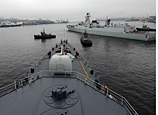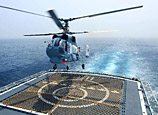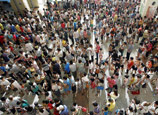
"The weak trade data pose further downside risks to the June and second-quarter growth numbers that will be released on July 15, helping to reinforce our concern over risks in the second half," said Zhang Zhiwei, chief economist in China with Nomura Securities.
The purchasing managers' index, a gauge of activity in the manufacturing sector, slipped to a four-month low of 50.1 in June from 50.8 in May, according to the statistics bureau.
In addition, the latest liquidity squeeze in the interbank market along with shadow banking activity and local government debt has added to market concerns over China's economic outlook.
So far, the State Council led by Premier Li has sent consistent signals that the policy stance will remain tight to contain financial risks.
"As macro data weaken further, next week will be a testing time for the government in revealing just how much of a growth slowdown it is willing to tolerate," Zhang said.
On Tuesday, the International Monetary Fund cut its forecast for China's economic growth this year to 7.8 percent from 8.1 percent and downgraded its GDP prediction for 2014 to 7.7 percent from 8.3 percent.
IMF chief economist Olivier Blanchard said at a news conference on Tuesday, "My impression is that the country where there is the largest risk in terms of a large decrease in growth is China."
Lu Zhengwei, chief economist with Industrial Bank, said the government may tolerate a lowest growth rate of 7.5 percent and an inflation rate of 3.5 percent.
Huang Yiping, chief China economist at Barclays Capital, speculated that the new leadership may tolerate the growth rate slipping to 7 percent this year. As growth momentum is weak, inflation is less likely to rise above this year's target, Huang said.
The consumer price index, a main gauge of inflation, grew 2.4 percent in the first half.
A report from Barclays Capital said: "We continue to expect further structural reforms ... to be announced in coming months. These should help market mechanisms play a bigger role, increase private investment activity and inject more vigor into the underlying economy."

















 Wild Siberian tiger kills cattle in NE China
Wild Siberian tiger kills cattle in NE China


![]()
